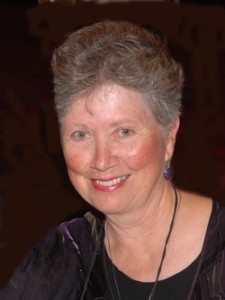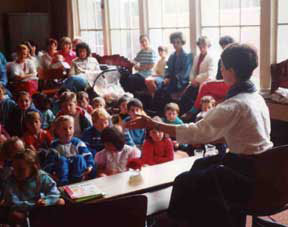Stories. At every level of society. Their universal appeal is undeniable. And though Borders announced internal operating changes recently, stories and storytelling are here to stay. The fabric of your world, and mine, is defined by story. In fact, the human condition is primarily understood through the power of story.
Ask any writer. Ask any reader.
Ask an adult, a child, a teenager, a senior citizen.
Ask Tom Brokaw.
- It’s all storytelling, you know. That’s what journalism is all about.
Like a beautiful flowering vine, we seem to crave life pieces that connect … somehow. And we appear to need the beauty of story, as well. What stories tell us about special moments in life when things make perfect sense, when people make remarkable contributions, or overcome adversity.
We simply want to know the story. It doesn’t necessarily have to include a happy ending either.
But within the framework of a story, we come to understand ourselves a tiny bit better. And we feel “connected” to something beyond our individual lives. We feel less alone.
So regardless of how a story is delivered or shared, my lovely guest,, will put your mind at ease regarding the future of story. A multi-talented individual from , Cathryn was born in California and recently spent 8 months in the southern hemisphere (tropical islands, New Zealand, Australia). But, in short, she’s all of these things and more:
- Storyteller
- Writer and Blogger
- Community Development Consultant
The Gift of Story
by Cathryn Wellner
You may not be aware of this, but I discovered storytelling. I remember so clearly the light bulb that turned on in my head. It flooded the room with light.
I was the librarian in a school where the oldest children were in Grade 3. Those little ones had no need for the research skills I’d taught in high schools the previous eight years. I hadn’t a clue what to do with the twenty-four students who sat at my knee. I read them a lot of books. They loved it. So did I.
One day I set aside the books and told one of the kindergarten classes a story.
- At first they were puzzled. “Where’s the book?”
“Today you’re the book. I’ll tell the story. You’ll make the pictures in your minds.”
And they did. I was wildly successful with my pint-sized audience. That day, I was convinced I had discovered storytelling. Oh, I knew I was next in a long line of librarian storytellers, but I was sure no one before me had grasped the incredible power of an oral tale.
An ancient, irrepressible art
I was wrong, of course. My piece of the storytelling pie was barely a nibble. From the moment in human history when thoughts could be formulated into words, our forebears began telling stories. We don’t have recordings of the earliest tales, but we do have records in stone and on tablets. They assure us that every theme around which we build a story has been explored for centuries, from every conceivable angle.
- Rumors of the death of storytelling have always been exaggerated.
When stories were recorded on cave walls, clay tablets, and illuminated manuscripts, they took on another form but did not disappear. When the printing press and the spread of literacy made stories more accessible, people still told stories.
The electric light allowed people to separate into different rooms instead of gather around a fire. Computers made it possible for everyone with the funds to invest in the beloved, cursed machines to scuttle off into their own realm. Then along came smart phones and e-readers.
Oh, the threats to storytelling have been myriad. The only thing is, storytelling never disappeared. Every step of the way, every new medium needed stories. People wrote and told them. The hunger for stories never abated.
Rediscovering storytelling
Still, people talk of storytelling revivals. I’ve done it myself. Two that have divided storytellers into camps are performance storytelling and organizational narrative.
I began in the first camp. Shortly after I discovered storytelling I found there was a national organization devoted to the art. There were annual conferences and festivals. Some people were even making a living traveling the circuit.
- Storytelling became my vocation.
A calling is like wine. It improves with age. The more immersed I became in the art, the more I saw people blossom when they heard a story that resonated for them. It didn’t matter if the story was one I’d drawn from the cannon of folk literature, one I’d crafted myself, or one I’d asked an author’s permission to tell. When it fell on a receptive heart, the story was a blessing.
William Bausch wrote about that experience in Storytelling: Imagination and Faith: “When a man comes to you and tells you your own story, you know that your sins are forgiven. And when you are forgiven, you are healed.”
For me, telling stories to a receptive audience was a transcendent experience. We entered the room as strangers and left feeling as if we knew each other well. The same thing happened in workshops. The deep connections people made through their stories were transitory, but they were so powerful participants would leave promising to stay in touch forever.
Storytelling as a tool
The second and more recent revival of storytelling is in the field of organizational narrative. I stumbled into this when I moved to a ranching community in the heart of British Columbia. With a ranch to run and bills to pay, I could no longer afford to spend most of my life on the road.
- But I was still a storyteller.
So when I re-packaged my skills and entered the field of community development, I brought with me the sense that stories guide every aspect of our lives. Whether the group hiring me wanted to market their work, create a new company vision, find a different direction, or learn to craft funding proposals, what they really wanted was a new story. They were looking for a story that would enable them to move in a better direction, attract funds, gain supporters, or reorganize their operations.
As with performance storytelling, I was a latecomer. Some very bright minds had already crafted websites and written books on organizational narrative. They viewed storytelling as another skill to be mastered, a tool whose effectiveness could be taught.
Today there are many entrants in the field. They are marketers, business consultants, filmmakers, and communications experts. They understand that engaging the heart precedes tapping the pocketbook or influencing action. Whether we view them as clever or manipulative depends on the situation and our point of view. What they all have in common is an awareness of the unmatchable power of a good story.
No story, no truth
The two storytelling camps—performance and tool—often view each other across a divide of suspicion. Performers sometimes think the art is being co-opted by super salesmen who have no regard for the deeper meaning of stories. Those more interested in organizational narrative sometimes view performers as narrow and possessive, missing the broader potential. Both are right. Both are wrong.
- Storytelling belongs to all of us.
We begin to form narratives when we first acquire a facility with language. We never stop telling stories. We never stop listening to them. We never stop needing them. Without them we would be truly lost in our complex world.
observation on storytelling is a fitting summation. It is both a tribute to and a caveat about the power of stories.
In the introduction to We Are Still Married, he wrote: “Of all those men [presidents], Reagan was the best storyteller. He saw America as a fabulous land, a small town of sixty million Christian families who work hard, play ball, and handle their own problems. He truly believed in his story and was disinterested in other, gloomier visions.…Nothing he said ever came back to haunt him. His mastery of the air baffled and dazed his enemies, who couldn’t take seriously a man who refused to face up to the facts of the American decline. They were serious men, who trusted scholarship and experience and competence, but he revealed their crucial flaw: they had no story, and a man who has no story is a man with no truth to offer.”
◊◊◊
You can find Cathryn Wellner @storyroute (Twitter)
or on Facebook.
Artists should always think of themselves as cosmic
instruments for storytelling. –Ted Lange


